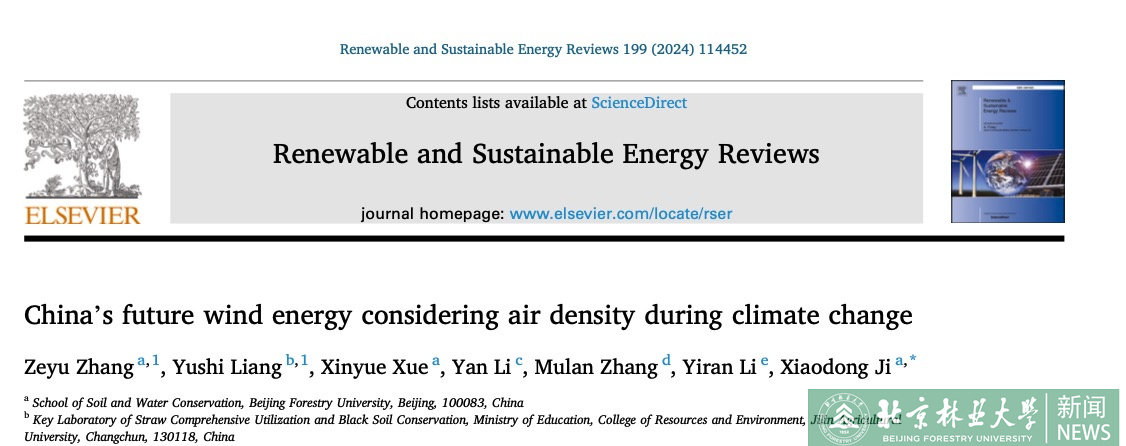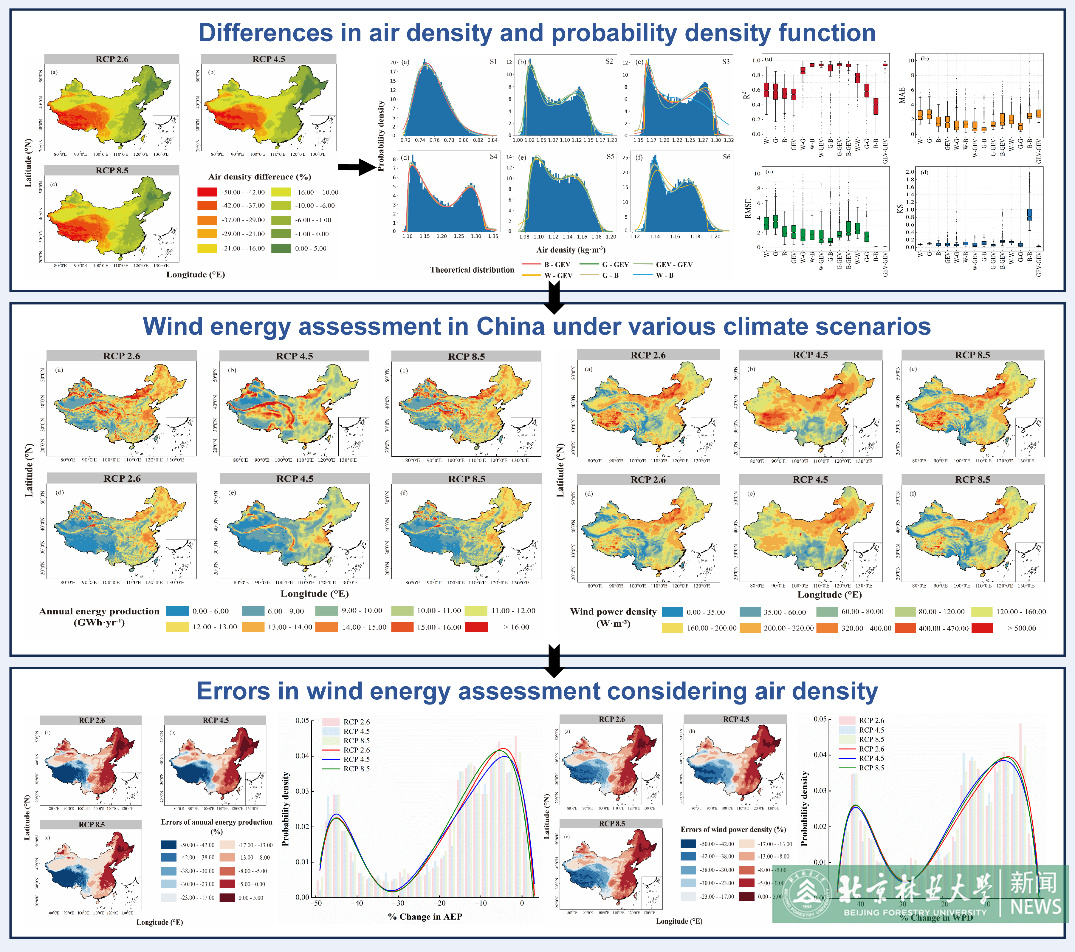Latest news
Recently, a research paper titled "China's future wind energy considering air density during climate change" was published by Professor Ji Xiaodong's team from the School of Soil and Water Conservation of BFU. This paper is featured in Renewable and Sustainable Energy Reviews, a leading journal in sustainable energy. It presents a novel assessment of China's future wind energy resources, considering account changes in air density due to climate change.

To assess the impact of air density on future wind resources under representative concentration pathway (RCP) scenarios (RCP2.6, RCP4.5, and RCP8.5), the Coordinated Regional Downscaling Experiment-East Asia project was utilized to simulate the future air density characteristics of China (2021–2100). Empirical air density distributions were calculated, and fourteen probability density functions were fitted to the empirical air density distributions, determining the optimal fitted distribution functions. In this study, the effect of air density on the annual energy production and wind power density was quantified. The results indicated that only approximately 4 % of regional air density values reaches the standard air density under the three climate scenarios. The seven parameter Generalized Extreme Value-Generalized Extreme Value distribution, six parameter Gamma-Generalized Extreme Value distribution, and six parameter Exponentiated Weibull- Generalized Extreme Value distribution matched the empirical distributions well under RCP2.6, RCP4.5, and RCP8.5, respectively. Annual energy production and wind power density decreased by more than 15 % after considering air density. Under the different RCP scenarios (RCP2.6, RCP4.5, and RCP8.5), the errors of annual energy production and wind power density gradually escalate. In the Tibetan Plateau region, accounting for air density results in an overestimation of annual energy production by over 40 % and wind power density by more than 35 %. The findings of this study offer guidance for future wind energy resource planning, enabling optimal utilization of wind energy resources.

Zhang Zeyu, a doctoral student from the School of Soil and Water conservation, and Liang Yushi, a lecturer from Jilin Agricultural University, are the co-first authors of the paper. Professor Ji Xiaodong is the corresponding author, with Beijng forestry University as the signature unit of the first author.
The work was supported by the National Natural Science Foundation of China (31570708), the Major Science and Technology Program for Water Pollution Control and Treatment of China (2017ZX07101002-002), and the National Key Scientific and Technological Infrastructure project “Earth System Science Numerical Simulator Facility” (EarthLab).
Paper Link: https://doi.org/10.1016/j.rser.2024.114452
Written by Zhang Zeyu
Translated and edited by Song He
Reviewed by Yu Yangyang










